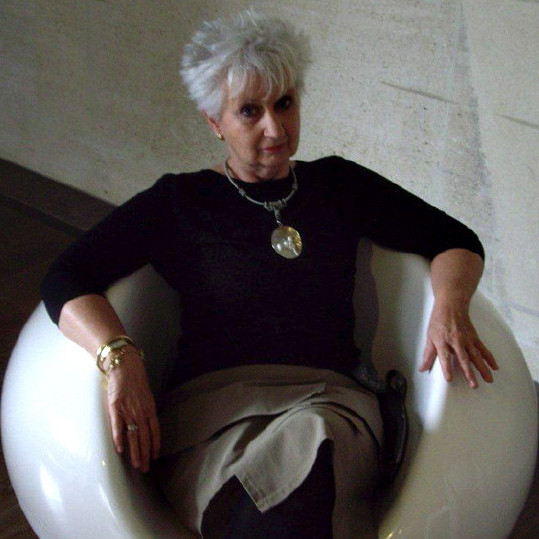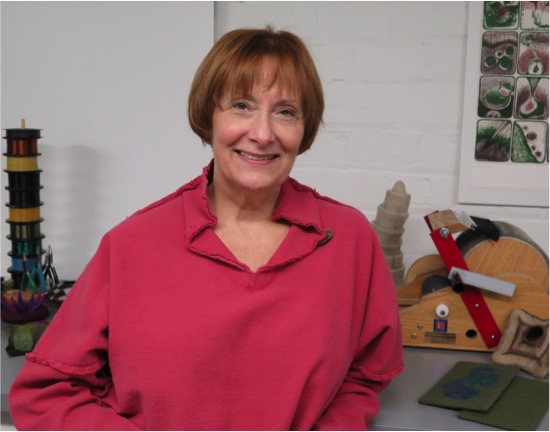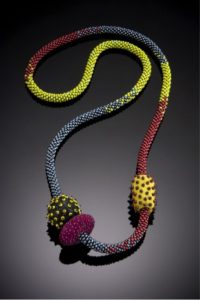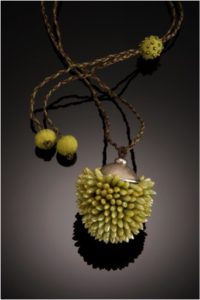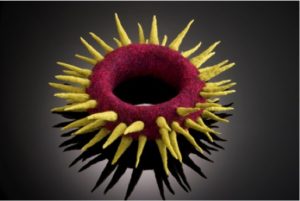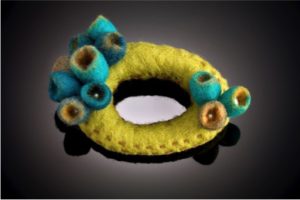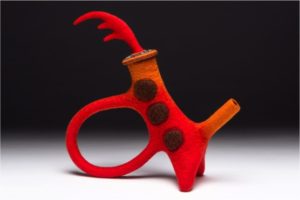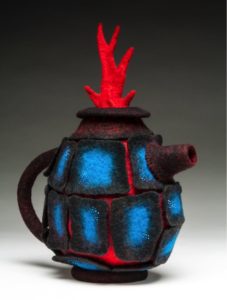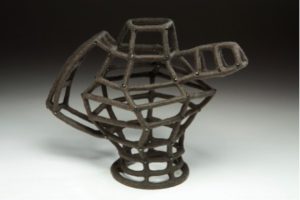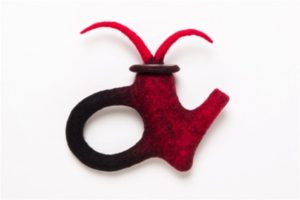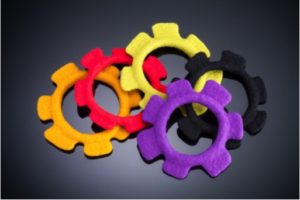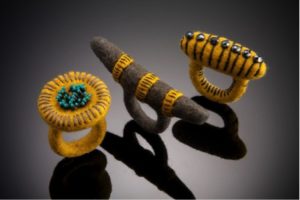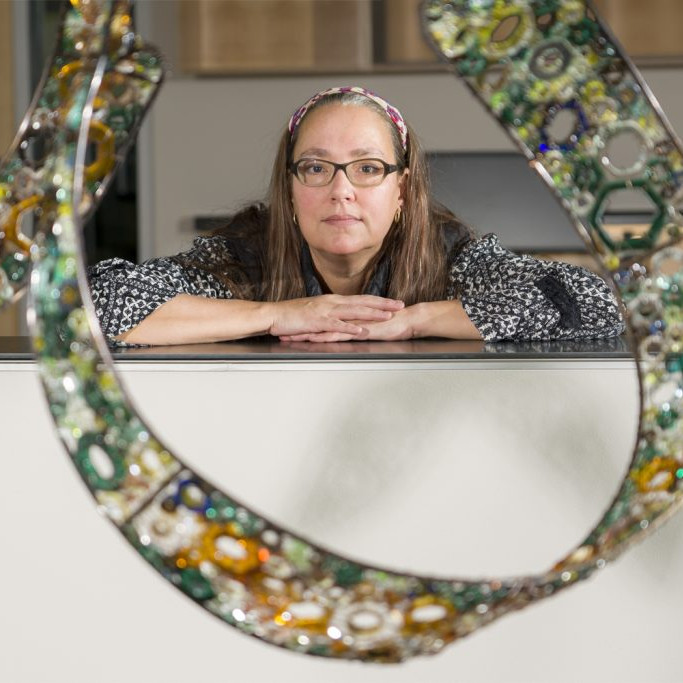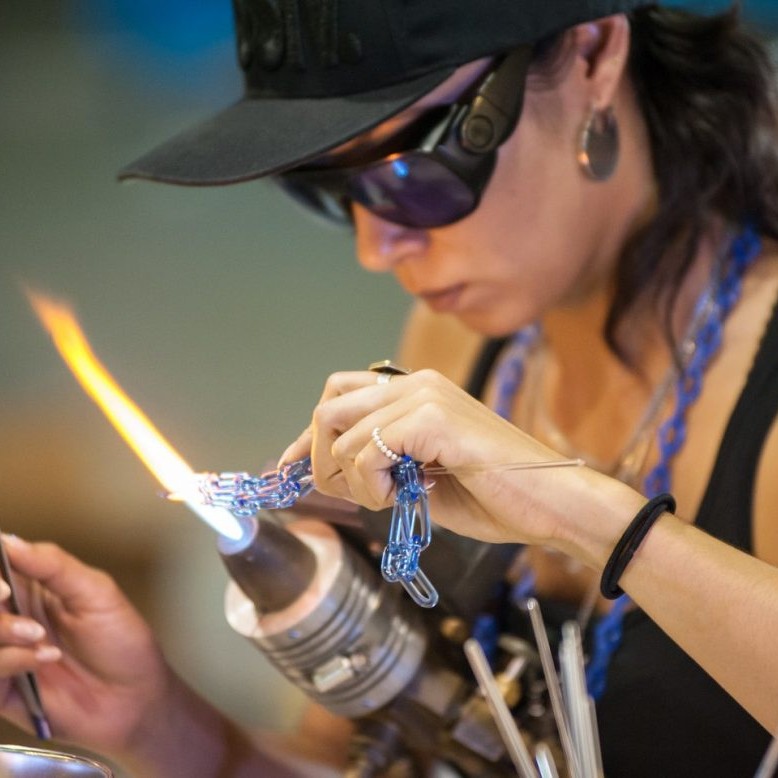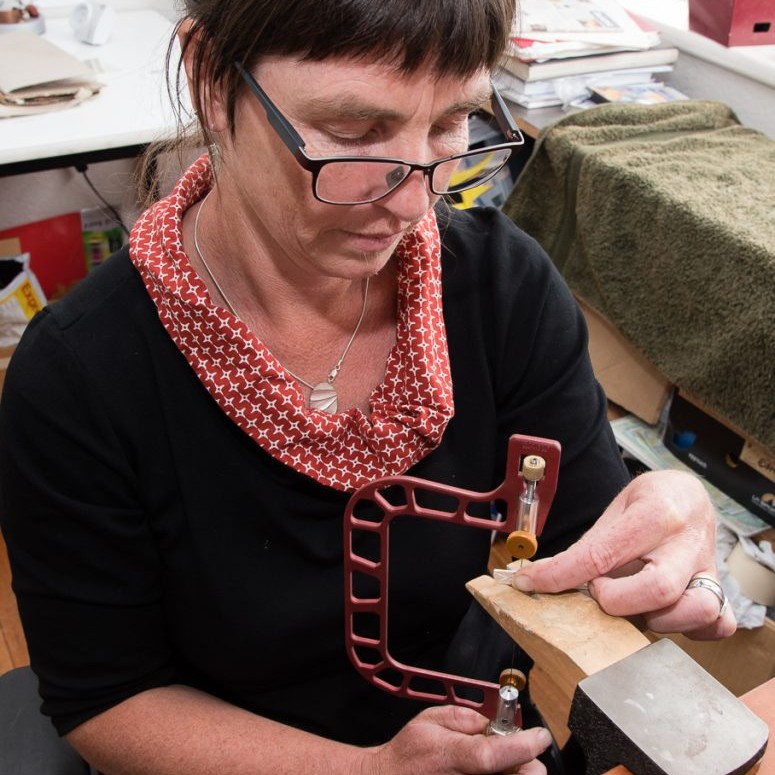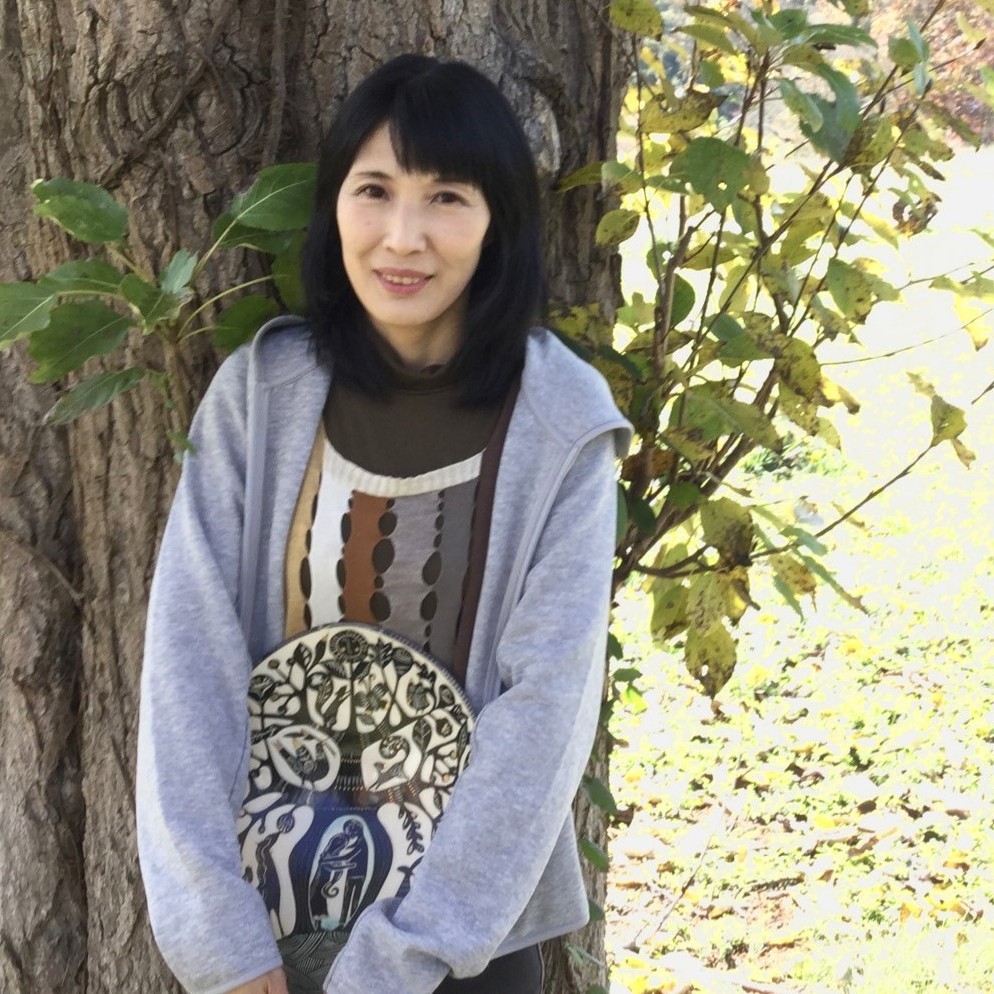Shelley Jones Felt Jewellery Artist - Richmond, Virginia, USA
Can you discuss the journey you have taken with your three techniques to get to the combination you are currently using?
I started as a graphic artist, doing mostly print media work. During that 18 year period I seemed to have little time for making art for my own pleasure. I switched careers, getting a degree in social work, and started silversmithing as a hobby. I only had time to make jewelry at night, and had little interaction with other artists. I decided I needed to find a less cumbersome (for me) and more socially interactive medium. I began to work with glass beads and fell in love with the colors and textures. I explored a range of beading techniques on my own and in workshops. I found bead crochet and free-form beading most appealed to me. I especially like the portability of beads and the ability to work on projects as I travelled for work. I tried to include my silversmithing, and eventually took up silver metal clay, finding I could mold the silver in a way that worked for me. But I still could not quite fit the silver and beads together in a manner that was all my own.
In 2004 I took a basic felting workshop at a beading exposition and got a taste of felt. I found the colors and textures of wool spoke to me as beads had earlier. I experimented with wool, trying to make it do things I was not sure it could do, but enjoying its malleability. I began to add felted elements to my beads and silver and found the perfect combination of elements for my ongoing work.
Discuss the weight aspect of your felted jewellery?
As I continued to explore what felt could do, I especially liked the very light-weight quality of the felted work. As I added beads to the work I was pleased with the contrast between the hardness of the glass and the softness of the wool. I liked the sense of weight and playfulness in the work that I seem to always end up with.
Discuss the combination of felt and beads?
Expand on the technique you have used to create a necklace?
For my crochet ropes, I wanted to embellish them, and the addition of felt helped add dimension, yet kept the weight of the piece down. I use mostly charlotte seed beads because they have a cut side to the bead which catches the light. My choice of beads and colors tends to the less vivid and shiny, with the cut bead adding only a subtle flash of light. I often use a contrasting thread, most often an embroidery weight polyester thread that has little stretch and great strength. I must sketch out and count my beads for each design, and find I am often reflecting the colors of natural elements and creatures.
I also love dagger beads, which come in such a range of colors, many of which remind me of my garden. These are used in my dagger bead pieces, which I often top with fine silver. They have a core of felt into which I stitch the dagger beads. The cord is adjustable and embellished with felt. So I am able to use all three of my favorite mediums to make a nicely weighted neckpiece.
Can you discuss ‘Bangle with Spikes’?
This was one of my first successful ventures into felt jewelry. I wanted to use colors that make me happy and make a piece that was playful, yet stretched me. It is made of merino wool and has a copper wire armature, since I was concerned it might fall out of shape. I no longer have this concern for such a simple design.
You also use semi-precious stones, such as pearls. Can you discuss the use of pearls in your work?
I am always drawn to the patina of pearls and have added them to some of my pieces. They provide such a subtle sheen and texture to felt. The gemstones I have added are also the types that have a subtle light, yet add that contrast of hardness of the gemstone to the softness of the felt that appeals to me.
You also make vessels in felt. Can you expand on one or two of your vessels?
Recently I have added decorative vessels to my repertoire. Each is made of hand-felted wool, and often decorated with stitching, beading and sometimes fine silver. I am particularly drawn to teapot inspired designs.
Roadrunner is made of hand-felted merino wool, hollow formed using a multi-level resist. The top is removable and has a fine silver base to the lid. Hand stitching with a heavy weight polyester thread I find very dependable when working on wool felt finishes off the piece. It is 12Hx11Lx4W inches in size.
Hot Pot was inspired by my forgetfulness in leaving the burner on under my tea kettle. It is hand-felted merino wool with a flame red underfelt that bleeds into the burnt grey “steel” and cerulean blue ‘enamel”. Embellished with glass seed beads to catch the light and hand stitching to attach the handle and spout. It is 12.25Hx9Lx5.5W inches in size.
Discuss the use of colour in your work?
Intuitea came about by covering a wire armature made from millinery wire with hand-felted merino wool, expressing my idea of the gridlines for a teapot. The corner beads are vintage glass nailheads. It is 9.5Hx13Lx7W inches in size.
Colour is a large part of your felting, do you do your own dying?
My pieces are relatively small, I prefer to buy wool that is already dyed. I find I can blend colours with my drum carder and layering techniques that have satisfied me so far. When I find a dyer willing to part with unusual colours or blends I take full advantage!
Please take one or two of your most current pieces and discuss the work?
My larger teapots made me think of smaller ones, so I have started a series of small teapot brooches. About 4 inches wide, they are also hollow formed and topped with a detachable lid with a fine silver base.
A fairly new series I am working on arose while looking at some old tools and found gears to be most intriguing. So I made some simple felt bangles in non-industrial colors. They are fun to stack on the wrist.
With your rings, what are your care suggestions?
My rings require little care other than that required of jewelry in general. A piece may get wet, but that is not a problem. It was made with soap and water. Just let it dry naturally and all is well. If it gets soiled it can be gently cleaned with a damp cloth. The colors will not bleed, since this has been addressed in the making of the piece. The beads are stitched using strong thread, so they would only loosen if forgotten in the pocket and tossed in the washer and dryer!
Explain your teaching and where this is done?
I teach only a couple of workshops each year: beginning felting classes and a range of wire and bead classes. I teach at the Virginia Museum of Fine Arts Studio School and in my studio at my home.
Contact details.
Shelley Jones, Richmond, Virginia, USA
Web: www.shelleyjones.net
Email: shelley1448@gmail.com
Shelley Jones, Richmond, Virginia, USA
Interview by Deborah Blakeley, January 2015
Think a colleague or friend could benefit from this interview?
Knowledge is one of the biggest assets in any business. So why not forward this on to your friends and colleagues so they too can start taking advantage of the insightful information the artist has given?
Other artists you may be interested in:

